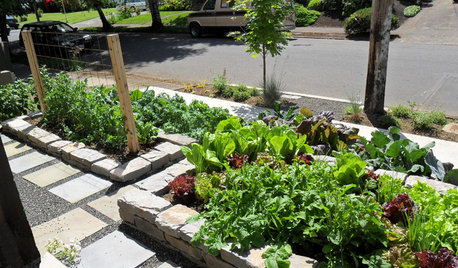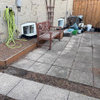fresh grass clippings
FreeStyle
18 years ago
Related Stories

BATHROOM DESIGN3 Fresh and Fun Bathrooms Just Right for Teenage Girls
These new and remodeled spaces designed for pairs of sisters are brimming with personality and style
Full Story
DECORATING GUIDESSummer Style: 20 Fresh Ways to Bring in the Season
From surfboards and seashells to mason jars and hammocks, keep that laid-back vibe going through summer and beyond
Full Story
KIDS’ SPACESClip It Up: 8 Ways to Display Kids’ Art
Creative use of clips and hangers makes it easy to swap your children’s masterpieces in and out
Full Story
LANDSCAPE DESIGNIs It Time to Consider Fake Grass?
With more realistic-looking options than ever, synthetic turf can be a boon. Find the benefits and an installation how-to here
Full Story
SHOP HOUZZShop Houzz: Get a Fresh Look With Wallpaper
Update your space with wall coverings in every style, from subtle grass cloth to daring prints
Full Story
DECORATING GUIDESWalls Have a Field Day With Grass Cloth
Rustic or refined, richly textured grass cloth provides a burst of natural freshness to your interior decorating
Full Story
FRONT YARD IDEASWelcome Edibles Into the Front Yard for Fresh Food and More
Give your front yard design a boost and maybe even make new friends by growing fruits and vegetables
Full Story
FEEL-GOOD HOMESimple Pleasures: The Joy of Fresh Sheets
Make your bed a place of comfort and relaxation with good-quality linens, ample pillows and other pleasing accoutrements
Full Story
WHITESummer Style: 16 Fresh Ways With White Curtains
Simple white curtains bring refreshing lightness or whispery innocence to bedrooms, patios and more
Full Story
DECORATING GUIDESHoliday Decor Goes Fresh and Rustic
Heavenly scented pine branches and other decorations courtesy of the outdoors make for naturally lovely displays
Full StorySponsored
Columbus Area's Luxury Design Build Firm | 17x Best of Houzz Winner!
More Discussions







bigeasyjock
adirondackgardener
Related Professionals
Fillmore Landscape Architects & Landscape Designers · Bridgeview Landscape Contractors · Federal Way Landscape Contractors · Mendota Heights Landscape Contractors · Parkland Landscape Contractors · Rochester Landscape Contractors · Snoqualmie Landscape Contractors · Wallingford Landscape Contractors · Welby Decks, Patios & Outdoor Enclosures · Bellingham Decks, Patios & Outdoor Enclosures · Carmel Decks, Patios & Outdoor Enclosures · Foothill Farms Decks, Patios & Outdoor Enclosures · Palmetto Decks, Patios & Outdoor Enclosures · Randallstown Decks, Patios & Outdoor Enclosures · Salisbury Decks, Patios & Outdoor Enclosuresrhizo_1 (North AL) zone 7
adirondackgardener
Kimmsr
apcohrs
rhizo_1 (North AL) zone 7
Tyrell
maupin
Tyrell
poravelston
Robert O'Mahony